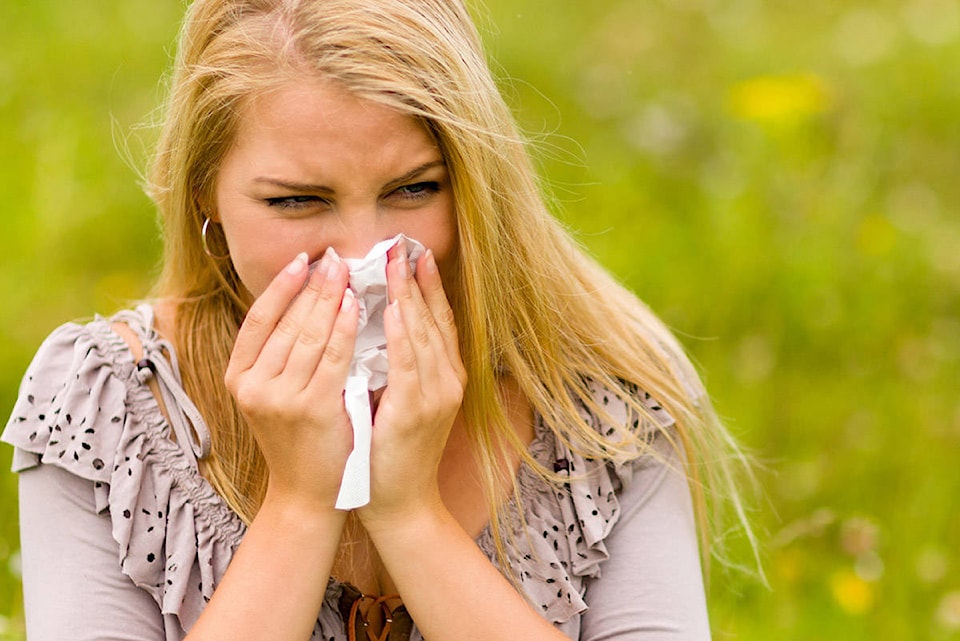Buck up hay fever sufferers the worst is over — for now.
“The intense tree pollen this year seems to have been mostly an Alberta issue,” said Lilly Byrtus, regional co-ordinator for the Allergy Asthma Information Association.
The yellow pollen seems to be everywhere this year. Outdoor surfaces have been covered in a thin dusting of bright yellow pollen that comes from coniferous trees, such as pine, spruce and fir.
Pollen levels three times higher than normal were recorded in Edmonton at one point last month.
For allergy sufferers, the pollen most often triggers stuffed noses and watery eyes.
Byrtus said the high pollen counts were triggered when the long winter suddenly turned into a hot, dry spring.
“It was like we skipped spring and went straight to summer,” said Byrtus.
Those kinds of conditions tend to condense the pollen period.
The situation has been improving lately. Recent showers helped wash the pollen out of the air.
“Fortunately for allergy sufferers, the worst may be over for now,” she said.
However, the pollen offensive is not over.
Now, grass pollen gets its turn to annoy and torment.
“Not all allergy sufferers are sensitive to both types of pollen, although some will continue to have allergy symptoms as the next pollen season starts,” she said.
The Weather Network’s pollen forecast for Edmonton projects moderate counts for pine, fir and spruce. True grasses pollen counts are expected to go from low to moderate by the end of the week. Miscellaneous weeds remains low.
In Calgary, pollen counts for pine, fir and spruce are expected to remain high until the end of the week. Other counts remain low.
A high pollen count means 81 to 200 grains per square metre have been counted. Moderate is 21 to 80 and low is one to 20 grains.
